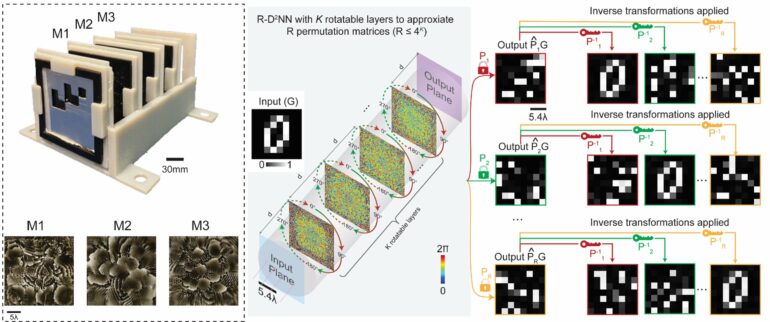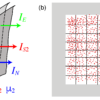Engineers at the University of California, Los Angeles (UCLA) have unveiled a major advancement in optical computing technology that promises to enhance data processing and encryption. The work is published in the journal Laser & Photonics Reviews.
This innovative work, led by Professor Aydogan Ozcan and his team, showcases a reconfigurable diffractive optical network capable of executing high-dimensional permutation operations, offering a significant leap forward in telecommunications and data security applications.
Permutation operations, essential for various applications, including telecommunications and encryption, have traditionally relied on electronic hardware. However, the UCLA team’s advancement uses all-optical diffractive computing to perform these operations in a multiplexed manner, significantly improving efficiency and scalability.
By leveraging the intrinsic properties of light, the research introduces a novel method to execute high-dimensional permutation operations through a multiplexed diffractive optical network.
Innovative diffractive design
The team’s design features a reconfigurable multiplexed material, structured using deep learning algorithms. Each diffractive layer in the network can rotate in four orientations: 0°, 90°, 180°, and 270°. This allows a K-layer rotatable diffractive material to perform up to 4K independent permutation operations, making it highly versatile.
The original input data can be decrypted by applying a specific inverse permutation matrix, ensuring data security.
Experimental validation and applications
To demonstrate the practicality of this technology, the researchers approximated 256 randomly selected permutation matrices using four rotatable diffractive layers. They also showcased the design’s versatility by integrating polarization degrees of freedom, further enhancing its multiplexing capabilities.
The experimental validation, conducted using terahertz radiation and 3D-printed diffractive layers, closely matched the numerical results, underscoring the design’s reliability and potential for real-world applications.
Future prospects
The reconfigurable diffractive network offers mechanical reconfigurability, allowing multifunctional representation through a single fabrication process. This innovation is particularly promising for applications in optical switching and encryption, where high-speed, power-efficient information transfer and multiplexed processing are crucial.
The UCLA team’s transformative work not only paves the way for advanced data processing and encryption methods but also highlights the immense potential of optical computing technologies in addressing contemporary technological challenges.
More information:
Guangdong Ma et al, Multiplexed All‐Optical Permutation Operations Using a Reconfigurable Diffractive Optical Network, Laser & Photonics Reviews (2024). DOI: 10.1002/lpor.202400238
Provided by
UCLA Engineering Institute for Technology Advancement
Citation:
Engineers develop advanced optical computing method for multiplexed data processing and encryption (2024, July 8)



